17 November, 1999
The "tourist "side of being on Ross Island in Antarctica
While working on our presentations for the workshops and getting all of the
schedules worked out, I have had a chance to do some walking on the sea ice,
and ride in the Delta vehicle as well as the Terra bus. I have lots of
interesting photos to share with you and will send them one at a time since
I am limited to 1 meg per e-mail.
Yesterday evening I had a chance to ride in the Delta vehicle out to Cape
Evans where the Scott hut is still standing and has been made into a
memorial and is maintained by the New Zealand Historical Society. As I
understand it, Scott built the hut as a place from which to launch the treck
to the South Pole. The hut was used by other expeditions including the
re-supply party for the ill-fated Shackelton expedition. The recreation
department offers trips in the Delta vehicles that drive about 5-8 mph on
the sea ice for the 20 miles to Cape Evans from McMurdo Station. The drive
takes about an hour and a half as we bump along over cracks in the ice. If
you look at the huge tires, then you will understand that they can drive
over cracks that are no wider than a third of the width of the vehicle
tires. It
was cold, clear, crisp and windy! With 12 warm bodies in the vehicle, the
windows quickly frosted over requiring constant scraping with an ice
scraper. When going out onto the Ross Sea ice, we took along the ECW gear
and wore lots of warm clothing as well.
As we drove along the scenery was spectacular with excellent views of
Mt.Erebus, an active volcano that spouts steam with regularity. It looks
much like our very own volcano in the Seattle area. Several stops were made
along the way to view wild life. I will send photos of Weddell seals, skua
(looks like a large sea gull and is the only flying bird here) and a penguin
(a shot that I did not take but a better photographer than I snapped). The
group of about 20 people stayed at Cape Evans for several hours and we tried
to imagine what it might be like living there. One historic group lost
their lives here when the ship on which they arrived broke its ropes and
drifted away leaving the group stranded. The ship's anchor is still there.
As I walked up the hill and looked out over the frozen sea, it is easy to
understand why they selected this beautiful place at the foot of Mt.Erebus
as a safe shelter. After walking around for several hours inspecting rock
formations, skeletal remains of penguins, seals, and dogs, all of which must
have been meals for the people who lived here, it is hard to imagine what
they must have been thinking about. The beauty is breath taking. So is the
cold and wind. There is sadness mingled in with the beauty and enormous
respect for the forces of nature.
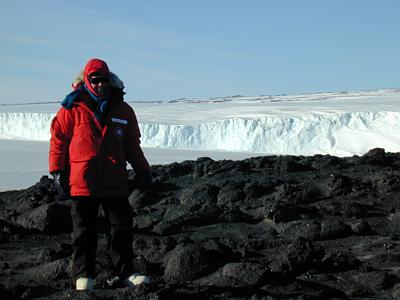
Standing on higher ground at Cape Evans, one can see the baren rock surface with the Mt.Erebus glacier ice wall in the distance.
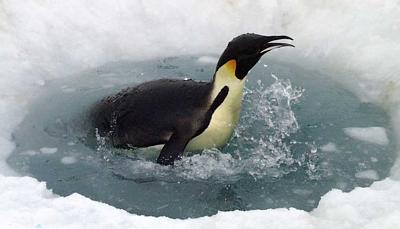
Penguin!

Mt. Erebus.
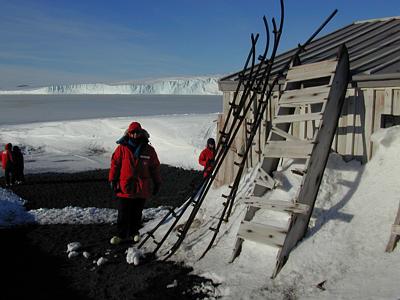
Barbara at Scott's Hut.

Seal on sea ice.
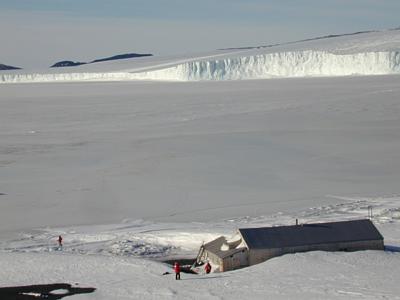
Imagine what it felt like if this was your where you are living and you saw your only transportation back home disapear into the sea! Remember that in 1914 they had no computers, or satalite dish to communicate.
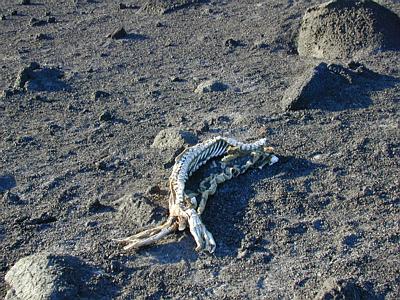
One can see bones lying about when hiking around the hillside at Cape Evans surrounded by a frozen sea.
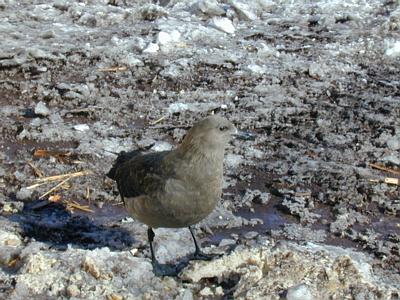
Skua!
Contact the TEA in the field at
.
If you cannot connect through your browser, copy the
TEA's e-mail address in the "To:" line of
your favorite e-mail package.
|
